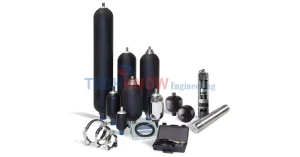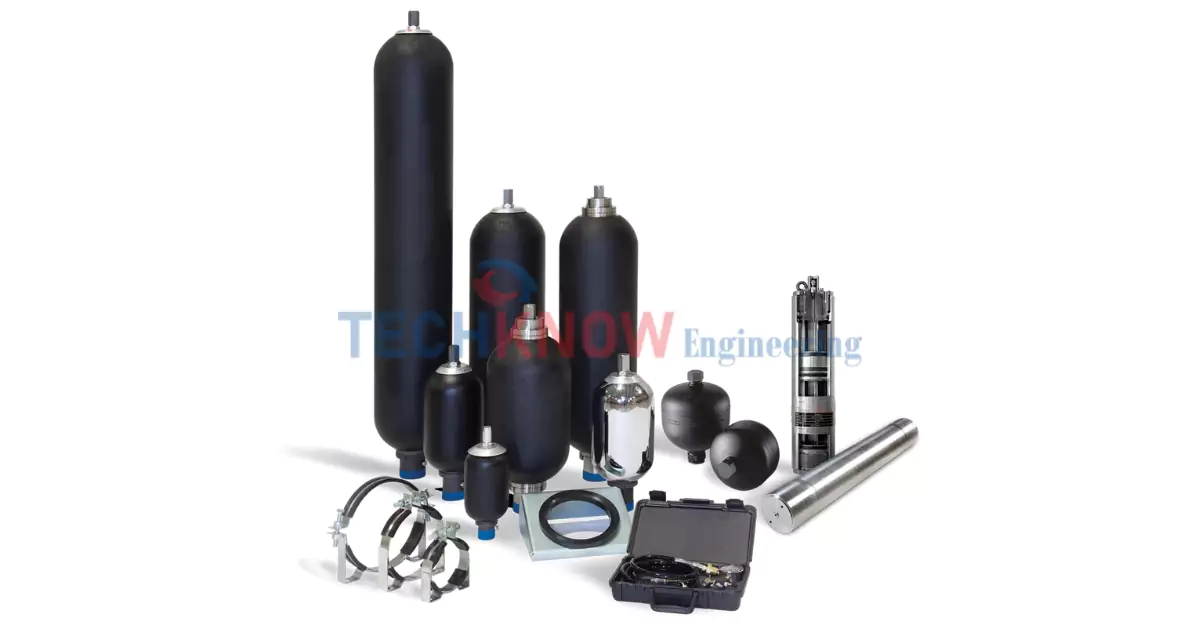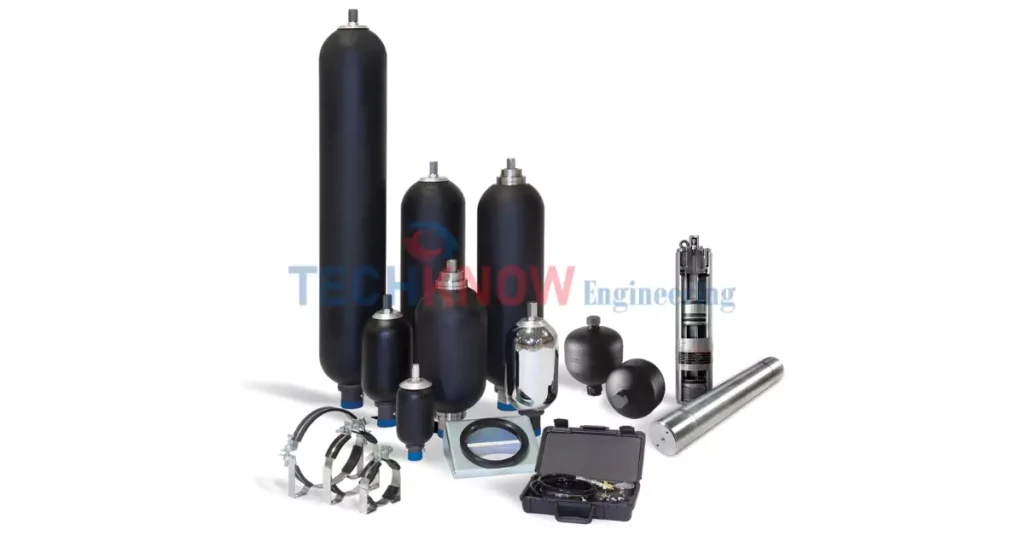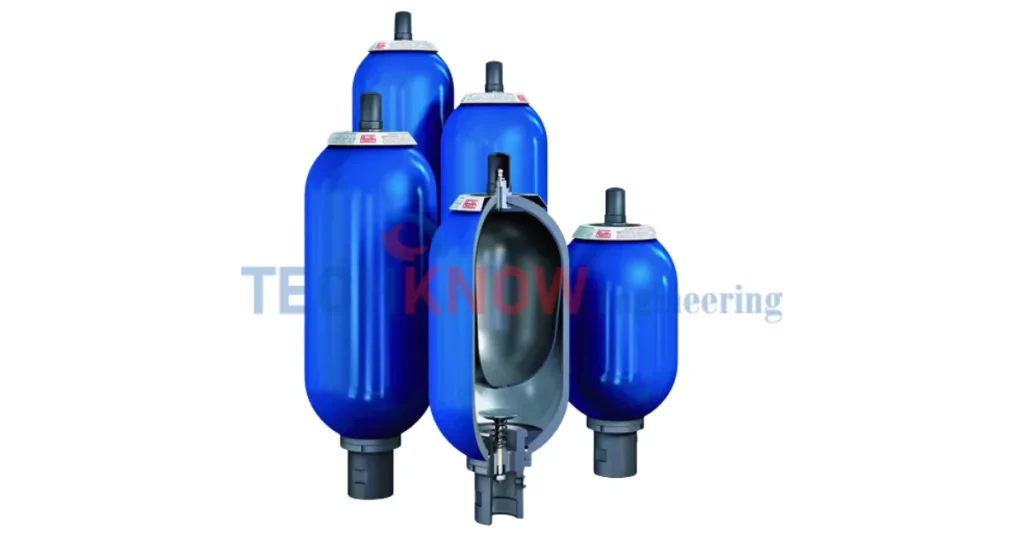Understanding Accumulators: Working Principles and Applications
What Are Accumulators?
Accumulators are energy storage devices that store potential energy in the form of compressed gas or fluid under pressure. They serve as crucial components in various industrial systems, providing energy storage, shock absorption, and pressure regulation capabilities. These versatile devices find applications across hydraulic systems, electrical circuits, and pneumatic operations.
Types of Accumulators
- Electric Accumulators: Electric accumulators, commonly known as batteries or capacitors, store electrical energy through chemical reactions or electrostatic fields. They provide backup power, smooth voltage fluctuations, and deliver high current bursts when needed.
- Hydraulic Accumulators: Hydraulic Accumulators store pressurized hydraulic fluid to supplement pump flow, absorb pressure surges, and maintain system pressure during peak demands. They are essential in hydraulic systems requiring consistent performance and energy efficiency.
Working Principles of Hydraulic Accumulators
Piston Accumulators
Design: Features a movable Piston Accumulators separating hydraulic fluid from compressed gas (typically nitrogen).
Working Principle:
- Gas chamber is pre-charged with nitrogen at predetermined pressure
- Hydraulic fluid enters the fluid chamber, compressing the gas
- During system discharge, compressed gas pushes fluid back into the hydraulic circuit
- Piston movement ensures complete separation between gas and fluid
Applications: Heavy-duty industrial applications requiring high flow rates and precise pressure control.
Bladder Accumulators
Design: Utilizes a flexible rubber Bladder Accumulators inside a steel shell to separate gas from hydraulic fluid.
Working Principle:
- Pre-charged bladder contains compressed nitrogen
- Hydraulic fluid surrounds the bladder in the shell cavity
- System pressure compresses the bladder, storing energy
- During discharge, expanding bladder forces fluid back into the system
- Bladder prevents gas-fluid contamination
Applications: Mobile equipment, machine tools, and systems requiring compact design with reliable performance.
Diaphragm Accumulators
Design: Employs a flexible Diaphragm Accumulators membrane to separate gas and fluid chambers.
Working Principle:
- Elastic diaphragm divides the accumulator into two chambers
- Gas chamber pre-charged with nitrogen at calculated pressure
- Hydraulic pressure deflects the diaphragm, compressing the gas
- Energy release occurs when diaphragm returns to original position
- Membrane flexibility ensures effective pressure transmission
Applications: Lower pressure systems, automotive applications, and compact machinery where space is limited.
Key Components and Accessories
Accumulator Charging Kits
Essential tools for proper accumulator maintenance, including:
- Pressure gauges for accurate monitoring
- Charging valves for gas filling operations
- Safety relief mechanisms
- Connection hoses and fittings
Accumulator Spares
Critical replacement components ensuring system reliability:
- Bladders and diaphragms for membrane-type units
- Seals and O-rings for pressure containment
- Piston assemblies for piston-type accumulators
- Gas valves and charging ports
Accumulator Accessories
Supporting components enhancing system performance:
- Pressure switches for automated control
- Safety blocks preventing accidental discharge
- Mounting brackets and installation hardware
- Filtration systems for fluid cleanliness
Accumulator Stations
Complete pre-engineered systems incorporating:
- Multiple accumulator units for increased capacity
- Integrated control panels and monitoring systems
- Safety valves and pressure regulation equipment
- Manifold assemblies for system integration
High Pressure Booster Units
Specialized equipment providing:
- Pressure amplification capabilities
- Enhanced system performance at elevated pressures
- Integration with existing hydraulic circuits
- Precise pressure control for demanding applications
Benefits of Accumulator Systems
- Energy Efficiency: Stores excess hydraulic energy during low-demand periods, reducing overall power consumption.
- System Response: Provides instantaneous fluid delivery for rapid actuator movement and improved system responsiveness.
- Pressure Stabilization: Maintains consistent system pressure, eliminating pressure fluctuations and ensuring smooth operation.
- Shock Absorption: Protects system components from pressure spikes and hydraulic shocks, extending equipment life.
- Emergency Backup: Supplies emergency power for critical operations during pump failure or power outages.
Accumulators represent fundamental components in modern hydraulic and electrical systems, offering versatile solutions for energy storage and pressure management. Whether utilizing piston, bladder, or diaphragm designs, these devices enhance system efficiency, reliability, and performance across diverse industrial applications.
At Techknow Engineering Enterprise, we provide comprehensive accumulator solutions including charging kits, spare parts, accessories, stations, and high-pressure booster units, ensuring optimal system performance and reliability for our clients’ critical applications.
Accumulator

Discover how accumulators work in hydraulic systems. Complete guide to piston, bladder, and diaphragm accumulators, their working principles, applications, and benefits. Techknow Engineering Enterprise offers charging kits, spares, accessories, stations & high-pressure booster units for optimal performance.
Product Brand: Techknow Engineering Enterprise
Product Currency: INR
Product In-Stock: InStock
5



